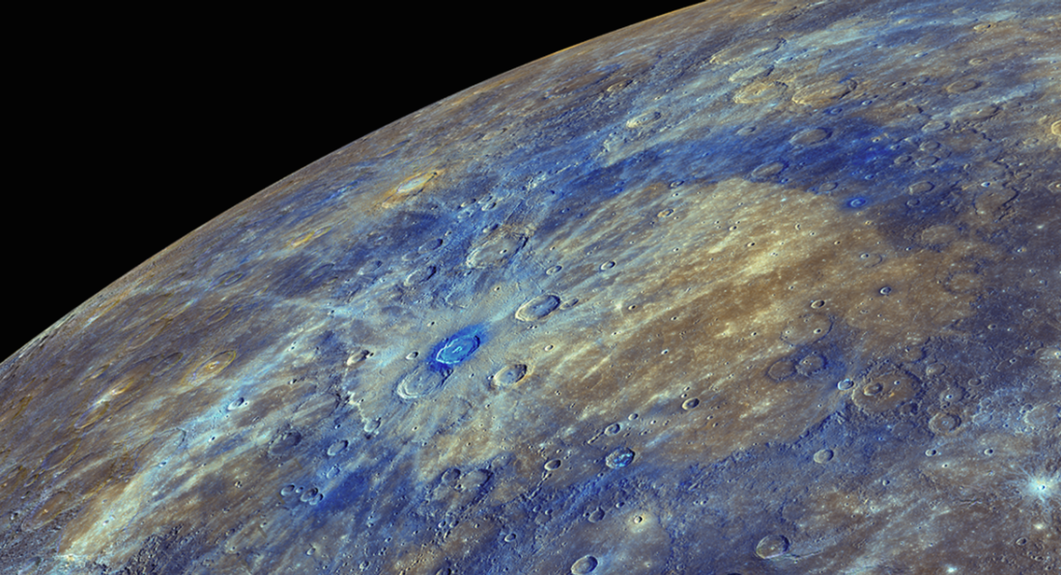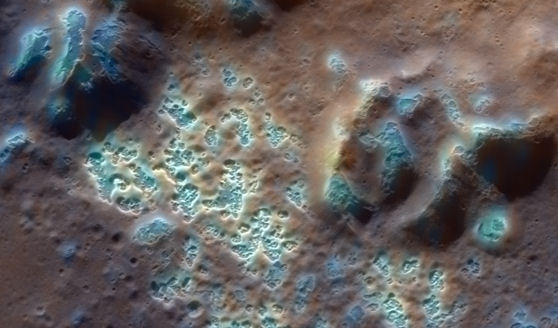
We are interested in the study of the surface and exosphere of Mercury using data from both space missions (i.e. MESSENGER) and ground based facilities. Our group has the responsibility of the Spectrometer and Imagers for Mpo-Bepicolombo Integrated Observatory SYStem (SIMBIOSYS) instrument which is on board the ESA BepiColombo mission, currently in orbit towards Mercury.
The surface of Mercury
Our research is currently aimed at the study of Mercury hollows, which are shallow, irregular, rimless, flat-floored depression with bright interiors and halos, often found on crater walls, rims, floors and central peaks. They are very young features, possibly forming via volatile loss. Our work is mainly focused on geomorphological and compositional analyses of hollows done using multicolor images acquired through the Mercury Dual Imaging System (MDIS) and spectral clustering techniques. Such analyses allows us to understand the geologic setting in which these features are found and their composition, suggesting that hollows are expression of the remnant material resulting from a process that involve devolatilization and the planet crust.

Example of Mercury hollows (image from https://science.nasa.gov)
For more information, we redirect you to the following articles:
- et al. ( 2018). Mercury hollows as remnants of original bedrock materials and devolatilization processes: A spectral clustering and geomorphological analysis. JGR: Planets, 123, 2365– 2379.
- Borin P., et al. (2016) Statistical analysis of the flux of micrometeoroids at Mercury from both cometary and asteroidal components,A&A, 585,A106
- Borin P., et al., (2016) Asymmetries in the dust flux at Mercury,Icarus,Volume 264, 220-226
- Thomas R. J. et al. (2015) A cone on Mercury: Analysis of a residual central peak encircled by an explosive volcanic vent, PSS,108,108-116
- Flamini F., et al., (2010) SIMBIO-SYS: The spectrometer and imagers integrated observatory system for the BepiColombo planetary orbiter, PSS, 58, 1–2, 125-143